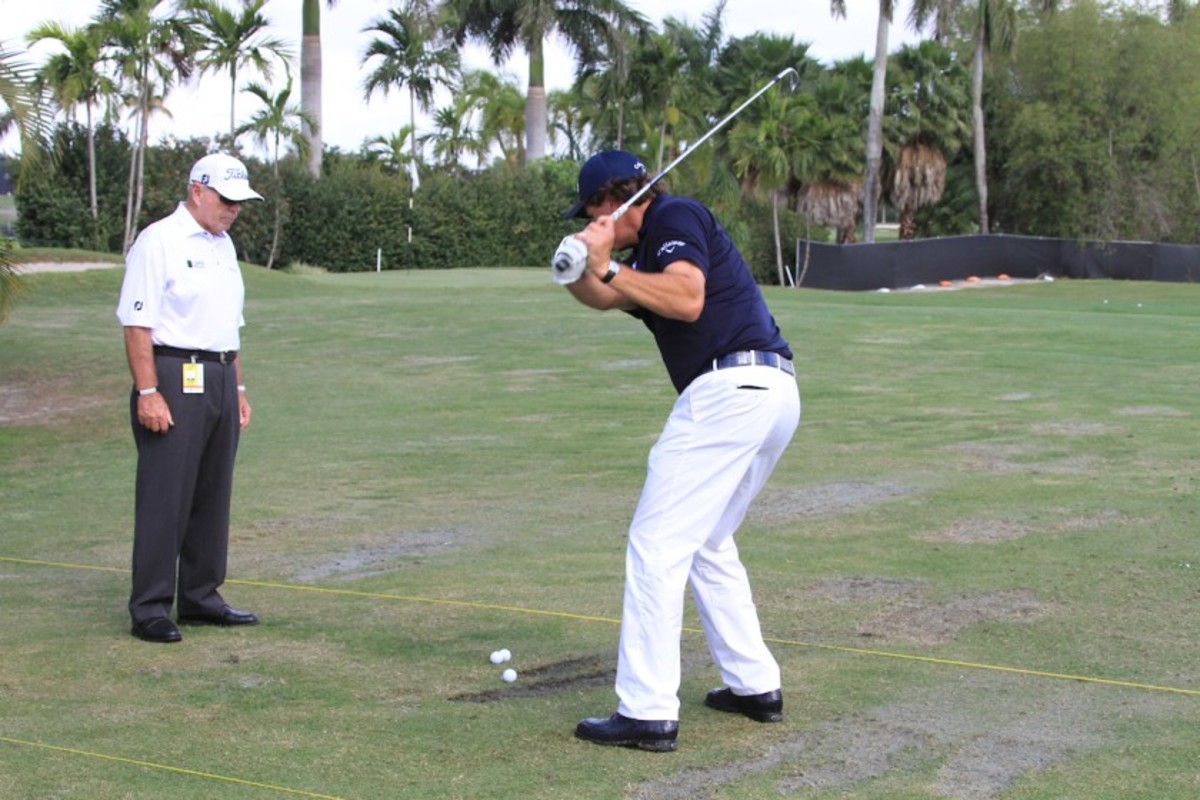Golf’s kings of swing, Butch Harmon and Hank Haney, command princely sums

Harvey Penick was one of the game’s greatest teachers, known far and wide for his “Little Red Book,” which at the time was the best-selling sports book in history. He was universally lauded for his simple, yet profound ideas about golf, such as, “Take one aspirin, not the whole bottle”; “Swing the club like you would a bucket of water”; and, his most famous: “Take dead aim.”
The most Penick ever charged for a lesson was $25. And he thought that was too much money.
Golf Digest recently published its annual ranking of “The 50 Best Teachers in America,” as voted by golf instructors nationwide. However, more interesting than the rankings is that the magazine also published what these teachers charge. Frankly, it’s eye-opening and, in some cases, shocking.

Butch Harmon is the perennial No. 1, and he gets $1,500 per hour. That’s probably not a surprise. For everyone else, the prices range from short-game guru Dave Pelz, who is ranked No. 38 and charges $20,000 a day (yes, that’s correct) and No. 21 Hank Haney, who gets $15,000 a day, all the way down to No. 45 James Leitz, who charges $150 an hour.
Part of that disparity is that Harmon and Haney are famous for teaching Tiger Woods at different points in his career, and Pelz has been Phil Mickelson’s personal Yoda on and around the greens for a number of years. On the other hand, you’ve probably never heard of Leitz outside of Covington, La., where he is based. Now that Leitz is on this list for the first time, his rates could change.
That’s certainly the case for George Gankas, who has become an Internet rock star over the past couple of years. He made his debut on the list at No. 11. Two years ago, Gankas charged $350 an hour, which seemed like a lot considering that he teaches off of mats at Westlake Golf Course, a scruffy public facility near Los Angeles. Now that he’s famous, Gankas’ fee is up to $800 an hour.
More teachers you might have heard of: David Leadbetter ($750/hour), Sean Foley ($1,000) Chuck Cook ($350), Jim McLean ($450), Claude Harmon III ($450), Stan Utley ($500), Cameron McCormick ($500) and Michael Breed ($500).
Granted, today’s golf instruction is more of a science than it was when Penick held forth on the lesson tee at Austin (Texas) Country Club. Penick never used video or V1 or TrackMan. He didn’t draw lines on a terminal screen or extrapolate angle of attack or spin in revolutions per minute. He just watched the flight of the ball.
What makes an hour lesson worth $500 or more? Do teachers who have taught PGA Tour players know more than everyone else? Can they read and interpret TrackMan numbers better? Can they look at video and tell you where your spine angle and shoulder turn should be at each point in the swing? No doubt, many of them are experts in the technical parts of instruction.
But is all that information commensurate with the money you spend? Do you really need the same things that Tour players need? Can they teach you the same way that they teach the best players in the world? Should they?
No matter how much you spend, a teacher’s worth is equal only to the willingness of the student to put the lesson into practice at the range. There’s not a teacher alive who can fix you in an hour unless you’re an expert player who just needs a tweak.
And if you’ve reached a certain age, some say that you have the swing you will have for the rest of your life unless you’re willing to hit 10,000 balls – or more – to make significant changes. Otherwise, you’re consigned to be like most golfers, trying to patch things with band-aids that often don’t work for more than one day.
Most people spend hundreds and thousands of dollars to take lessons from elite instructors for the same reason why they buy expensive houses and cars: because they can. They’re accustomed to the best of everything. Apparently, there are enough people like that to keep the top teachers in business.
Without question, some teachers are better than others. Who’s the best is subjective, at the very least, and is not necessarily directly proportional with the amount of their fee. Most of us never will take a lesson from Harmon or Haney or anyone else on the “50 Best” list. We’ll be content to find someone nearby who knows how to take words and translate them into feels that make sense to us.
Or, you can buy a copy of Penick’s “Little Red Book” and Bob Rotella’s “Golf Is Not a Game of Perfect.” Combined, they’ll cost you about as much as two minutes of Harmon’s time. And they’ll do you a lifetime of good.
